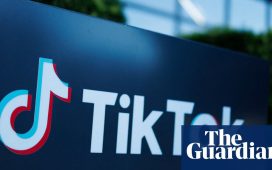
On Saturday, AT&T let us test the speed of its 5G network on a Galaxy S10 5G phone.
Juan Garzon/CNET
It’s fitting that I tested AT&T’s 5G network at the Warner Bros. studio in Los Angeles. Both Hollywood and 5G aim to take our wildest ideas and make them real. In AT&T’s case, it’s the promise of high speed mobile data over a cellular network, which could revolutionize how we use our phones, computers and connected devices. In the little time I spent testing 5G speeds at the AT&T Shape conference at Warner Bros., I was blown away by how fast they were. They cruised past the speeds we’ve witnessed in similar early 5G tests done with Verizon and Sprint.
AT&T now becomes the third US carrier over the past few months to give us a taste of the power and potential of 5G. After a less than stellar preview in April, Verizon flexed its blazing speed muscles in May around select parts of Chicago on its 5G network. Later that month, Sprint showed off its 5G network in Dallas-Fort Worth, and it proved impressive in terms of its speeds and the size of its coverage — even if Verizon’s demo was faster. AT&T’s approach was to show off a 5G connected campus on the Warner Bros. lot. Imagine a film crew being able to instantly share footage with someone on the other side of the lot.
If you haven’t heard of 5G, it’s the next generation of cellular technology, and it should allow for faster data speeds with incredibly low latency. The new generation of wireless innovation could lead to a slew of uses, both practical, like downloading movies to our phones in seconds or streaming AR/VR games without lag, and hopeful, like being a harbinger for new uses and technologies that have yet to be envisioned. The latter could truly revolutionize industries, from self-driving cars to remote medical procedures.
Usain Bolt-fast 5G speeds
Armed with a loaner Samsung Galaxy S10 5G phone, I ran a dozen speed tests around a town square backlot at Warner Bros. that was dotted with 5G millimeter wave nodes on rooftops. I was able to measure upload and download speeds and to download hours of movies and TV shows in a matter of seconds. The takeaway? AT&T 5G Plus is faster than The Flash when he has to pee. I got speeds that were consistently over 1Gbps, often hitting 1.6-1.7Gbps. That’s six times faster than my home internet.
I ran 12 tests with the Speedtest.net benchmarking app to measure speeds, and eight were over 1.4Gbps. The top speed I saw was 1.782Gbps, which is faster than the top speed of 1.3Gbps we experienced on Verizon’s 5G network in Chicago and the 484Mbps top mark we recorded in Dallas on Sprint’s 5G network.
I downloaded and installed PUBG Mobile, which is 1.9GB, in less than two and a half minutes. The first season of Blue Planet II (more than 5 hours of video) took less than a minute to download with the Netflix app.
From what I experienced on Saturday, 5G is still very much in its raw cookie dough state. Networks are still being built out, and the tests I ran are a wonderful tease of what our future wireless connections should be able to do.
But it’s worth noting that the speeds I experienced on AT&T’s 5G Plus are available only in small zones for businesses like Warner Bros. and Magic Leap. Consumers will have to wait till at least 2020 before they can experience these insane speeds themselves.
Speed is just one part of what makes 5G so appealing, though.
Low latency is the real game-changer for 5G
The Shape conference pointed at the true potential of 5G: its worth for businesses and developers. Interactive demos by companies like Magic Leap, Nvidia, Nokia, Google and IBM gave me a tiny glimpse into how that 5G speed can bring creative dreams and utilities a step closer to reality. But something I noticed across most demonstrations was that 5G’s secret weapon is really low latency. Latency is the time it takes your computer or gaming console to send data to an online server and get data back. The less time this takes, the better.
A whack-a-mole-style game from Ericsson showed off how vastly different the latency is between 5G, 4G and 3G connections. Instead of moles, there was an arcade table console that had small plastic circles across the top. When a circle lit up, you simply pressed it to get a point. Easy enough, right? However, when I played the game I wore a VR headset with cameras on the front. I could see only the live feed inside the headset, which was streamed over a 5G connection. Gameplay felt natural and easy until the connection switched to 4G. My timing immediately felt off, and then things got much worse when the connection switched to 3G. This demo was such an effective and fun way to show how 5G’s latency is crazy low.
Nvidia showed off its GeForce Now, a cloud streaming service for games. I played Batman Arkham City over 5G and had no idea I wasn’t playing a local copy. Movements were smooth, and reflexive gameplay felt no different than on a PlayStation.
Low latency won’t make headlines, but it means businesses can use cloud computing to create more-powerful experiences on our phones and devices. And I think it’s smart that AT&T is rolling out its 5G network to businesses and developers first. Remember when the iPhone was first released? There wasn’t an app store until a year later. And truly it was apps that made the iPhone so innovative.
AT&T is pushing businesses and developers to discover compelling uses for 5G. And those uses will be what ultimately makes 5G go mainstream to consumers. Until then, expect more speed tests and 5G phones that are aimed at early adopters.
Originally published June 22, 11:41 a.m. PT
Update, 6:48 p.m.: Adds details on speeds and demos.









